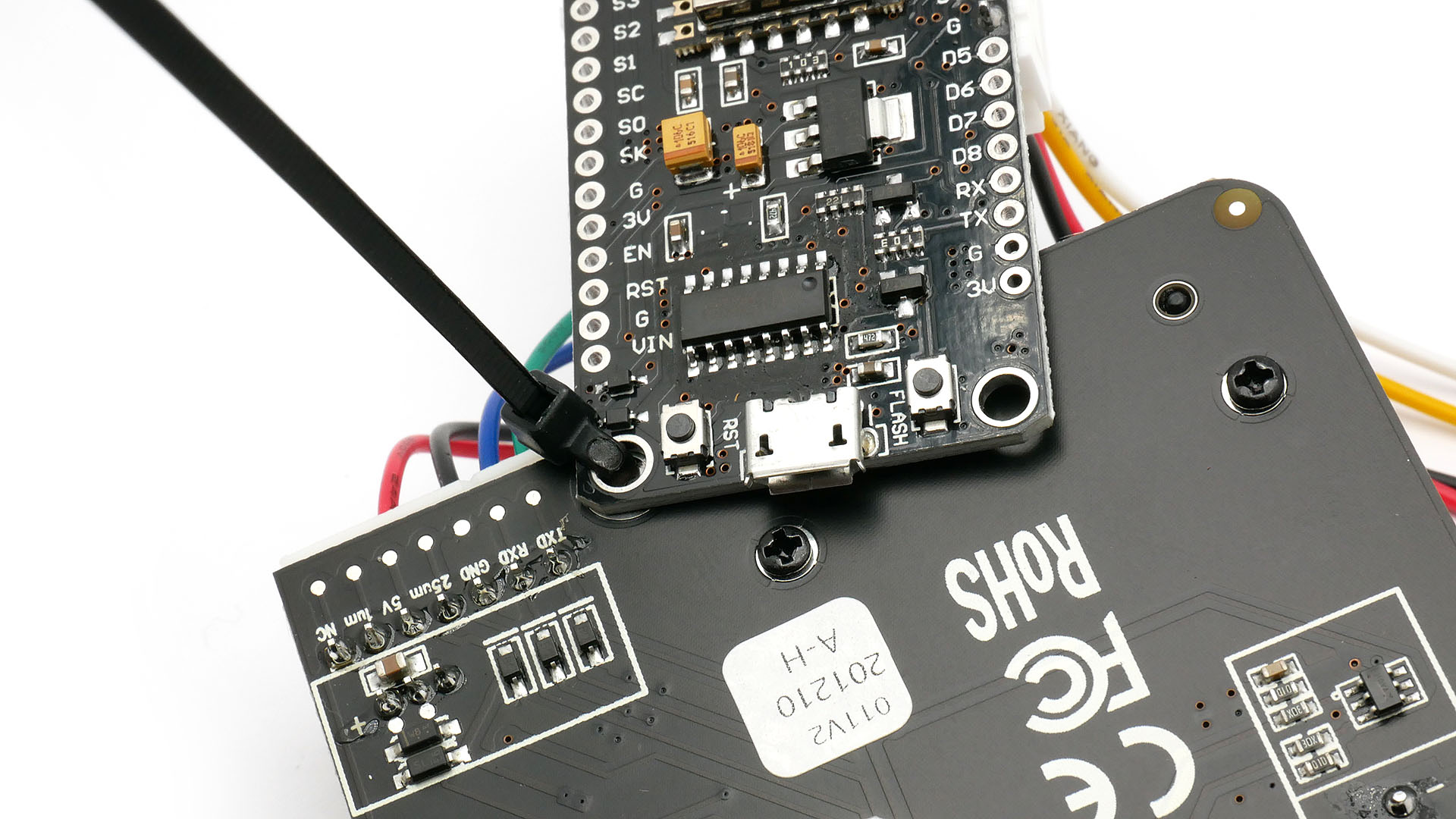¶ Smog Sensor Assembly Manual (SDS011 + SHT31 and SDS011 + BME280)
This instruction covers all current (Jan 2025) Sensor Community kits from Nettigo. They are unique since they use custom harness cable with special verison of controller board. Harness cable with unique connectors make connections sturdy and error proof. Each connector matches only one socket.
This kit from Nettigo contains all the parts needed for building your own smog sensor. In a moment, with the help of this manual, you will be building your device. I can assure you it is not difficult. Thousands of people have already gone through the process of building such a device.
"airRohr" has an enclosure made of two white plumbing elbows. It may look a bit strange, but it works really well. Thousands of such sensors are used in the international Sensor.Community project (formerly Luftdaten.info).
¶ How it works
At the heart of the device are two accurate sensors: NovaFitness SDS011 measuring the concentration of dust in the atmosphere and Sensirion SHT31 responsible for measuring temperature and relative humidity.
The brain of the sensor is a microcontroller board with WiFi (NodeMCU V3). Please note that it has been tested by us and equipped with special connectors to make assembly process really easy. We have uploaded the Sensor.Community firmware onto it. The user interface can be either in English or in Polish (depending on the selected version). The firmware is automatically updated via the Internet.
¶ Kit includes:

Electronic parts:
- 1 pcs x Nova Fitness SDS011 - Laser dust sensor
- 1 pcs x NodeMCU V3 LoLin ESP-12E - WiFi Module with soldered XH connectors
- 1 pcs x SHT31 - Precise temperature and humidity sensor with soldered XH connector
- 1 pcs x Custom made wire harness
- 1 pcs x Flat 2.8m micro USB cable
- 1 pcs x USB AC charger 5.2V 1.5A
Mechanical parts:
- 20 cm x Transparent 6mm tube
- 2 pcs x Hydraulic elbow 75mm PP 75 / 87.5° (white)
- 2 pcs x Small cable tie 100x2.5mm
- 2 pcs x Large cable tie 432x4.8mm
¶ Electrical components assembly

Connect the cable harness to the NodeMCU V3 board, SDS011 sensor and SHT31. There is only one way to connect it. Trust me, you can't do it wrong. We made sure that each connector is different.
¶ Mechanical assembly

Attach the NodeMCU V3 board with a small cable tie to the SDS011 sensor as shown in the photo (J31 hole of the dust sensor with the hole to the left of the micro USB port).

Connect the clear tube to the SDS011 sensor inlet.

Connect the micro USB cable to the NodeMCU V3 board. Then fasten the USB cable, the SHT31 sensor cables and the transparent tube with a small cable tie.

Pass the USB cable through the elbow. Then place all electronics inside the hydraulic elbow. It is important that the sensor is directed fan-down. This position reduces dust accumulation inside the sensor.

Slide the second elbow onto the assembled device. It is a good idea to slightly moisten the gasket - it slides easier.
Congratulations! Your sensor is ready!
¶ What's next?
- Power up the sensor using a USB charger.
- After about 1 or 2 minutes, you should see a WiFi network named airRohr-XXXXXXX with sensor ID instead of 'XXXXXXX'.
- Connect to this WiFi network and go to http://192.168.4.1. Since Apr 2024 airRohr-XXXXXXX config network has default password. When asked, try airrohrcfg
- Select destination WiFi network from the list and enter the password. Save the settings.
- You will find more information about firmware configuration at Sensor.Community page